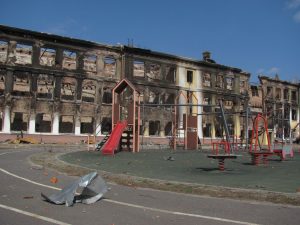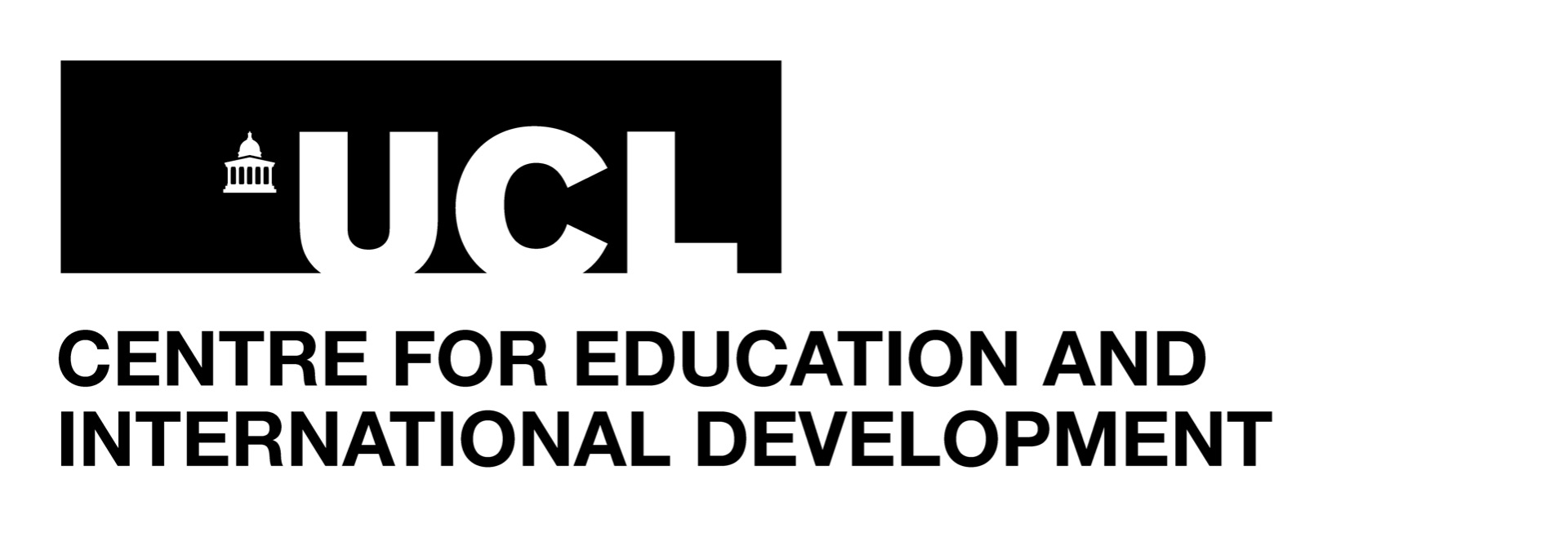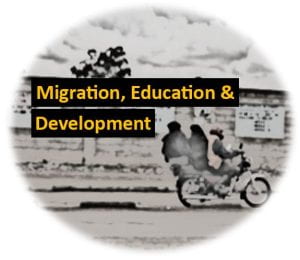A Call for Peace with Justice in the Occupied Palestinian Territories and Israel – recognising the pivotal role of education
By CEID Blogger, on 6 November 2023
By Elaine Unterhalter, Tejendra Pherali, Laila Kadiwal and Colleen Howell
NOTE: This opinion piece presents the personal views of the authors and is not a statement by CEID (Centre for Education and International Development)
For comments or further information, please get in touch with Professor Tejendra Pherali (T.Pherali@ucl.ac.uk)
The people living in the Occupied Palestinian Territories and Israel are facing a cataclysm, with horrific murders, hostage taking, devastating bombing over several weeks, mass displacements, and significant shortages of food, water and medical supplies. The UN Office for the Coordination of Humanitarian Affairs (OCHA) reported that Saturday, 21 October, marked the fifteenth day in Gaza of no access to education and safe places for more than 625 000 students and 22 564 teachers, with significant destruction of education infrastructure that has taken years to put in place and will take years to rebuild. Fear of a destructive regional war with devastating consequences is widespread. Meanwhile, there has been a sharp rise in Antisemitic and Islamophobic assaults around the world, including in the UK. This blog aims to bring some insights from our work in the Centre for Education and International Development (CEID), where we are linked to many individuals and networks engulfed by these events, to reflect on the implications for education of this appalling tragedy and to think about how educational processes could have potential to help formulate a different response that does not add more violence and terrible loss.
CEID is a research and teaching centre with a long history of involvement with education in low- and middle-income countries, and it has developed a body of scholarship in the field of education conflict and peace-building. From our experience with this work, we set out three themes relevant to building peace with justice. These are firstly, acknowledging the history that has created the conditions for the tragedy to unfold; secondly, taking seriously the role of education linked with structured forms of redress. Thirdly, we reflect on how scholarship in a field like education and international development can support building connections across many divisions and differently located communities.
Our analysis stems from our research on conflicts and education in Afghanistan, India, Nepal, Nigeria, Pakistan, South Africa, Tajikistan and Thailand. These studies highlight how, in these very different contexts, peace-making is a process that requires in-depth reflection, sustained examination of the processes that generate anger between groups, and particular kinds of actions – sometimes symbolic and sometimes material – that can look forward to moments of forgiveness. The absence of direct violence is not sufficient in itself to sustain peace because it does not address the root causes of conflict. To lessen conflict, and move towards a just peace, long-term policies are needed to address structural violence, which may be institutionalised through land seizures or extraction of natural resources, leading to dispossession and deepening inequalities, especially for indigenous communities. Divisive employment policies or education practices can reproduce intersecting inequalities. Achieving sustainable peace requires structural measures such as addressing the grievances of the marginalised and oppressed, redressing inequalities and building fairness in policy and practice in areas such as schooling, health or housing. This rests on supporting rights to self-determination, democratic participation and decision-making.
These processes require leadership that acknowledges historical injustices and is committed to social, economic and political transformation. Acknowledging painful histories and the different ways the anguish is borne by different communities has to form part of this process. In turn, while education can be part of the process of seeking to repair conflicts, it can also be deployed to exacerbate tension and hatred. A particular form of educative process is needed to animate contributions to thinking about memory, justice, peacebuilding and forgiveness. In the Occupied Palestinian Territories and Israel, and throughout the whole region, the scars of terrible wars and dispossessions have persisted over generations. The horrific events of the last three weeks have been hugely shaped by this history. But history is not destiny. Looking at all its pain, mistakes, and failures is a way to learn and attempt to build something new.
Education, which virtually everywhere is unequally distributed and of uneven quality, can be used to repress cultures, manipulate histories, glorify violence, portray diversity negatively, justify land grabs, and impose dominance. But education can also be a vehicle for fostering creative social and political innovations that can rescue societies from the trap of retributive violence. It can help develop a more critical understanding of complex histories and enable people to exercise their agency against the influence of manipulative ideologies and propaganda. A critically reflective education can support the valuing of diversity and the need to think about sustainability. It provides opportunities for redress and affirmative action to counter discrimination and injustices and contribute to combatting prejudices and stereotypes. Forms of education can heal and contribute towards forgiveness and reconciliation. Our course on Education, Conflict and Peace, gets students to engage with research which shows that a key part of peace-making entails processes that enable an examination of the root causes of violent conflict, which may be shaped by contrasting discourses, for differently located participants. Participatory approaches can help think about repair or reparations and the educational processes to support this.
Our third theme in this post relates to our field of enquiry. Education and International Development is a very malleable area in which some of the pressures of contemporary processes very quickly form areas of investigation, challenges to orthodoxies, and translations into practice. But for many of us over these last weeks, these scholarly pathways have been marked by shock, grief, silence and fear, as our concerns with education constantly raise the issue of children whose lives are being devastated by this conflict. Our hope is that we can draw on some of our store of knowledge with a sense of the responsibility our experience brings, and we do not turn away from the anguish of what is being suffered. We need to be attentive in all our teaching, research, collegial and community engagements to try to bridge the misunderstandings and address wilfully curated hatred, deepen understandings and think about how to offer support and solidarity for processes that lead to a just peace.
Any just peace for Palestine and Israel needs to start not with weapons of war but needs to entail educational processes of listening, reaching to understand, seeking not to do more harm or validate violence, but instead cultivate sensibilities for global justice, to affirm our moral bonds as fellow vulnerable humans on this fragile earth.
 Close
Close


 Other data do seem to place more of an emphasis on children and their schooling, although reliable systems for monitoring and tracking children have also been severely disrupted. Throughout the country, children are experiencing separation from parents, the destruction of family units and the breakup of their communities. The
Other data do seem to place more of an emphasis on children and their schooling, although reliable systems for monitoring and tracking children have also been severely disrupted. Throughout the country, children are experiencing separation from parents, the destruction of family units and the breakup of their communities. The  Many children who have left their homes are either taking part in remote learning, or accessing schools in the places where they now live. The MON puts the figure for the latter group at nearly 87,000 (21 April), a growing number. Levels of online learning will vary between regions, but to give some perspective (albeit anecdotally), a teacher contact in Kyiv reports that around 70-80% of students at her school are attending remote lessons. Schools were asked to report data on online attendance up to 14 April, which suggests that more concrete information on participation might soon become available. She also tells me that of those learning remotely, around 85% are in Ukraine, with 15% elsewhere. Indeed, Education Minister Serhiy Shkarlet
Many children who have left their homes are either taking part in remote learning, or accessing schools in the places where they now live. The MON puts the figure for the latter group at nearly 87,000 (21 April), a growing number. Levels of online learning will vary between regions, but to give some perspective (albeit anecdotally), a teacher contact in Kyiv reports that around 70-80% of students at her school are attending remote lessons. Schools were asked to report data on online attendance up to 14 April, which suggests that more concrete information on participation might soon become available. She also tells me that of those learning remotely, around 85% are in Ukraine, with 15% elsewhere. Indeed, Education Minister Serhiy Shkarlet 


